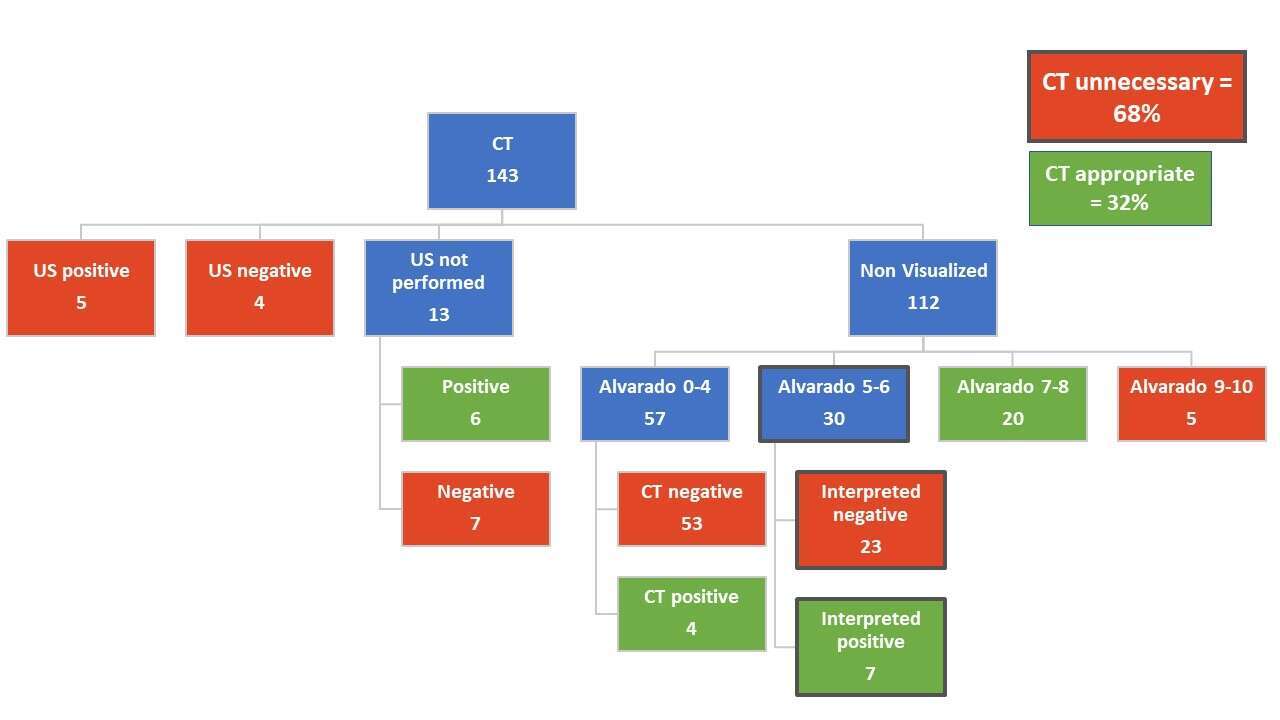PURPOSE: Acute appendicitis is the most common surgical diagnosis in children presenting with abdominal pain to the emergency department. As of today, there is no agreement about the best diagnostic approach for children having suspected appendicitis, and children with intermediate clinical suspicion comprise the most difficult group. The current recommendation is to perform an ultrasound (US) as a first line modality for the diagnosis of appendicitis, which is consistent with the ALARA (As Low As Reasonably Achievable) concept, striving to keep radiation doses to the minimum. A problem remains in patients whose initial US results are inconclusive. There are two acceptable options how to further treat these patients: Watchful waiting with re-evaluation, or to perform computed tomography (CT) to rule in or rule out acute appendicitis. Our study objective was to characterize those patients having moderate clinical suspicion and non-visualized appendix at US, who could benefit from watchful waiting approach, thus withholding them from CT scans and radiation exposure.
MATERIAL & METHODS: A retrospective research retrieved medical records of children with suspected appendicitis, who underwent abdominal CT. Data was collected to calculate the Alvarado score, clinical scoring systems which predicts the likelihood of acute appendicitis. We analyzed CT and US findings, including secondary findings for appendicitis in non-visualized appendix.
Results: OF 143 cases, 23 patients had low- to moderate clinical suspicion (Alvarado 5-6), non-visualized appendix and no secondary findings on US which was interpreted negative by the radiologist. In 20 out of the 23 cases the CT was also negative, meaning the sensitivity is 86.9%, rendering CT as unnecessary. This group can be clinically observed safely. In addition, CT is unnecessary when there is a conclusive US report (positive or negative), in children with low or high Alvarado score, which is sufficient to rule in and rule out suspected appendicitis. Thus, in the current study CT usage deemed unnecessary in 68.5%.
CONCLUSION: Secondary US findings and interpretation by a radiologist are of significant importance when the appendix is not visualized, especially in cases with low- to moderate Alvarado scores.


